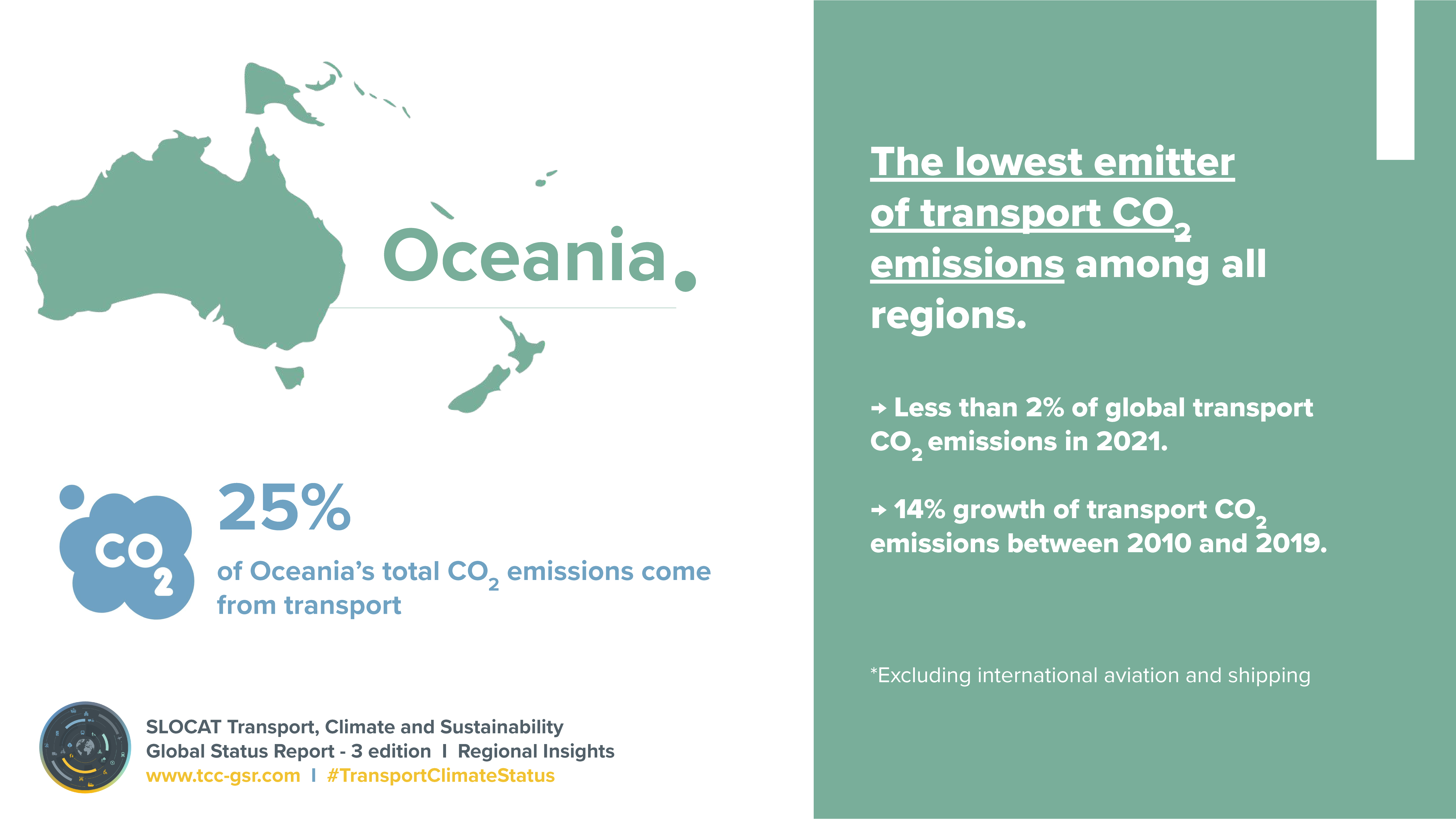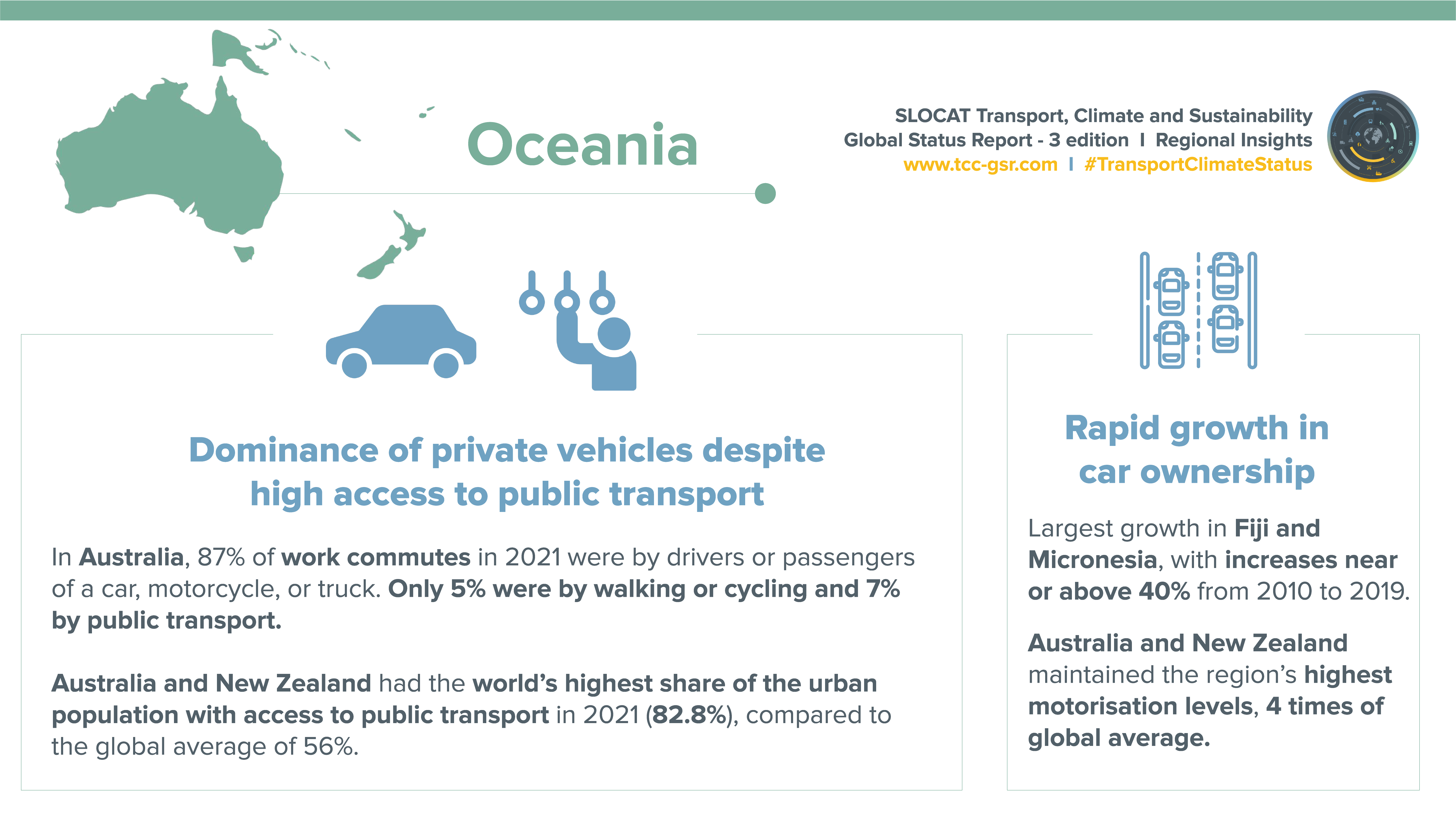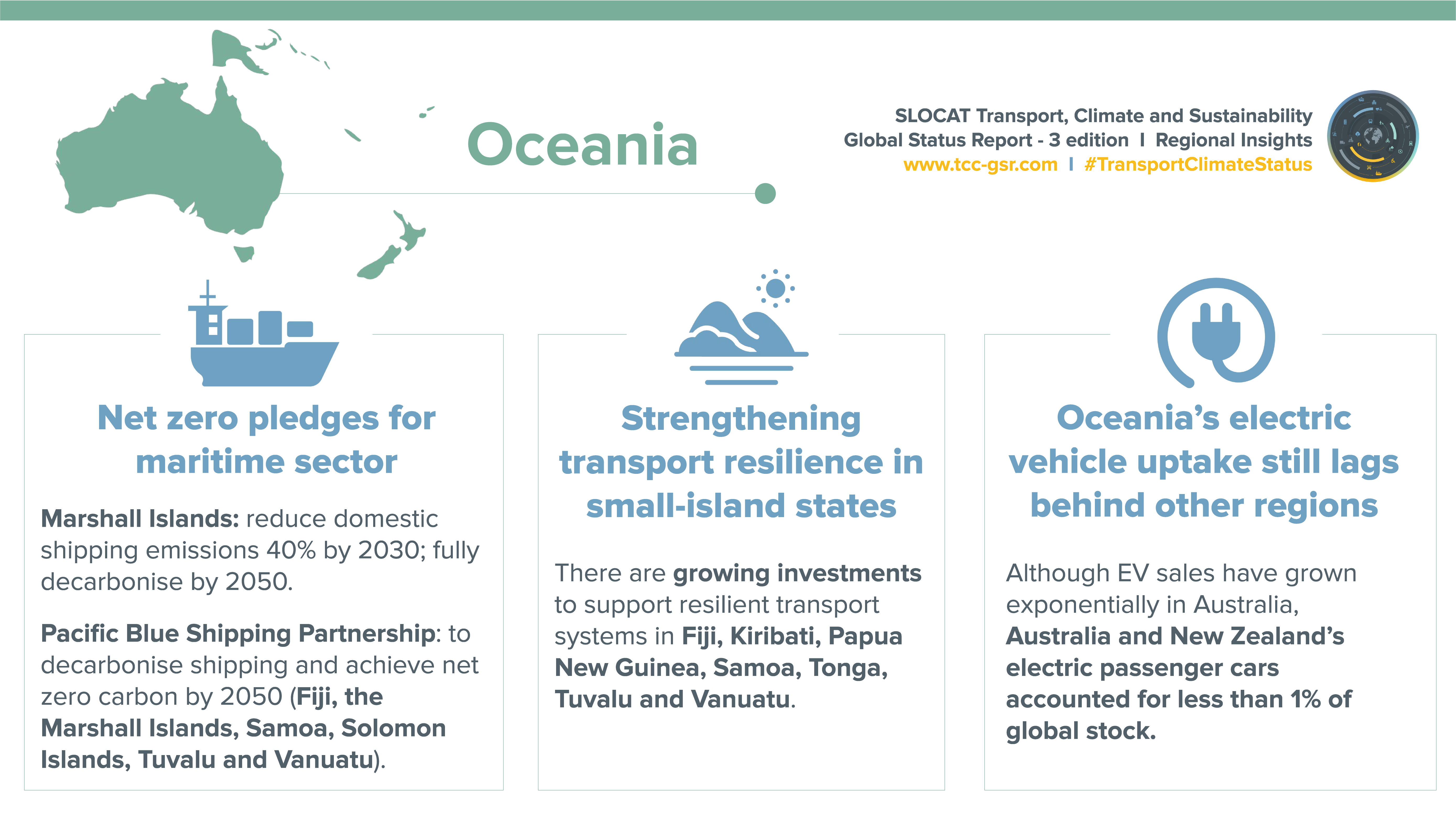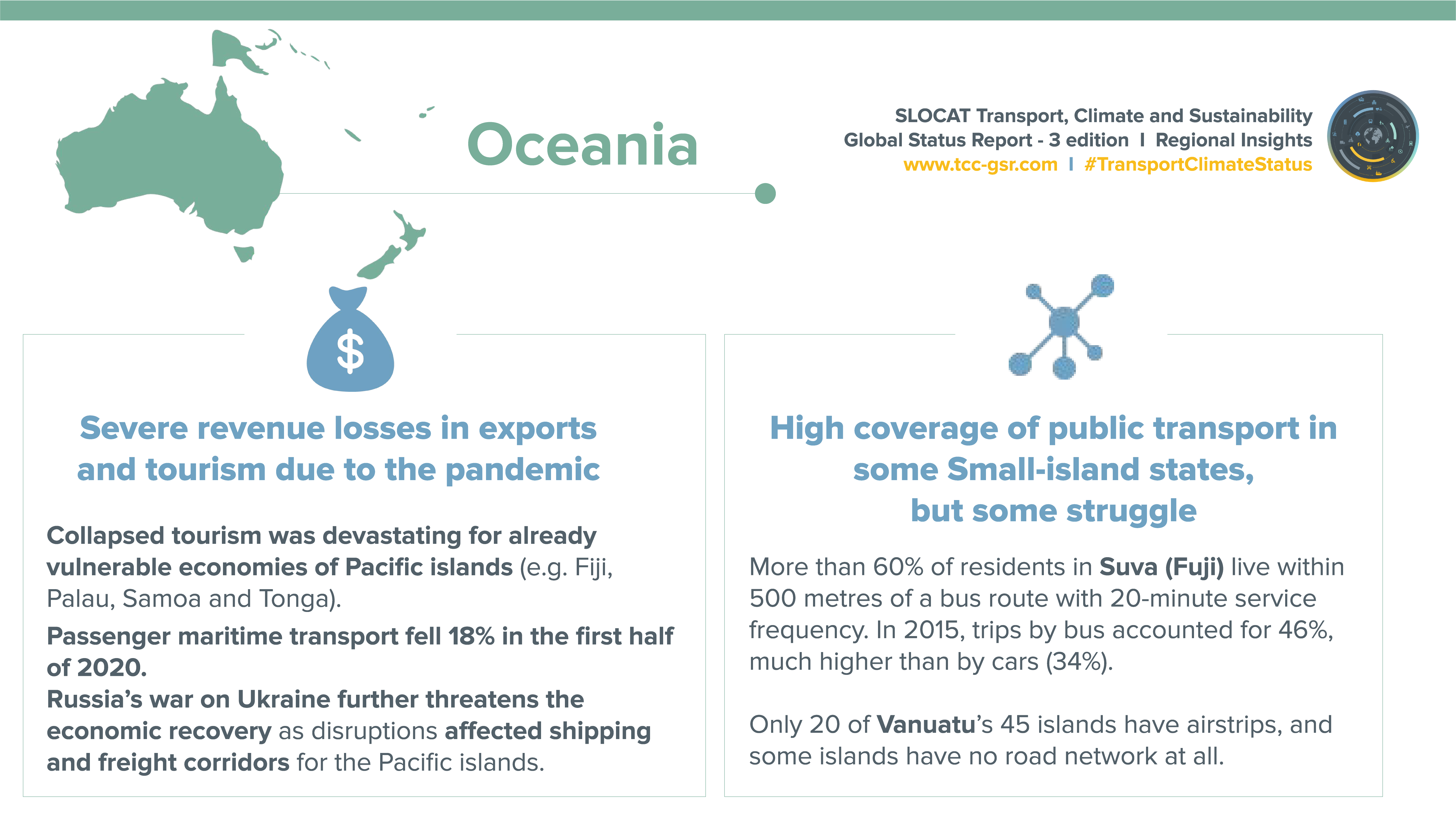-
 Oceania Regional Overview
Oceania Regional Overview
Population size
(2022)
Population growth
(2010-2022)
%
Urban population share
(2022)
%
Urban population
growth (2010-2022)
%
GDP per capita
(2021)
GDP growth
(2010-2021)
%
- Key Findings
Demand trends
- In the larger economies of Oceania, private car use has continued to dominate passenger transport, even though the region has good access to public transport.
- In Australia, around 87% of work commutes in 2021 were by drivers or passengers of a car, motorcycle, or truck, while only 5% were by walking or cycling and 7% by public transport.
- Small-island countries have experienced rapid growth in motorisation (covering four-wheeled motor vehicles) as economies grow and urbanise. During 2010-2019, the region’s largest growth was in Fiji and the Federated States of Micronesia, with increases near or above 40%. Australia and New Zealand had the highest overall motorisation levels in the region as of 2020.
- Oceania’s electric vehicle uptake still lags behind other regions, as electric passenger cars in Australia and New Zealand comprise less than 1% of the global electric car stock.
- The COVID-19 pandemic and related border closures had profound effects on the Oceania region, resulting in high revenue losses in commodity exports and tourism. The Russian Federation’s invasion of Ukraine further threatened the region’s economic recovery, as disruptions affected shipping and freight corridors through the Pacific.
- Small-island countries in Oceania have major needs for sustainable, low-carbon transport.
Emission trends
- Oceania remained the lowest emitter of transport carbon dioxide (CO2) emissions (excluding international aviation and shipping) among world regions in 2021, contributing less than 2% of transport emissions globally.
- Australia continued to be the largest emitter of transport CO2 in the region and the 17th largest emitter globally in 2021, but it was surpassed by Cook Islands in emissions per capita.
Policy developments
- During 2021 and 2022, countries in Oceania, including small-island states, enacted policy measures to enable and support electric vehicle uptake and to improve fuel efficiency standards.
- Recent investment projects have scaled up the ability of vulnerable small-island states to build resilient transport systems.
- Since 2019, Australia has increased its ambition on alternative fuels, such as hydrogen and sustainable aviation fuels.
- National and sub-national governments in Oceania have made net zero pledges in the transport sector, including for land, maritime and air transport.
- Climate action in New Zealand is being realised through comprehensive planning approaches, active mobility and support for public transport at the national and local levels.
- The Nationally Determined Contributions (NDCs) submitted by Oceania countries under the Paris Agreement as of 2022 offer a wide-ranging set of climate change mitigation and adaptation activities.
Author: Angel Cortez, SLOCAT Secretariat
Contributors: Helen Rowe and Margot Delafoulhouze, Climateworks Australia

